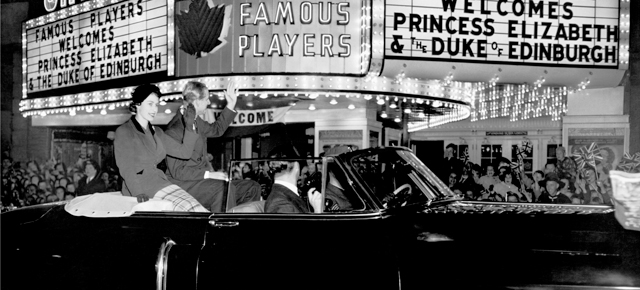
Royal Journey: The National Film Board’s first major hit
Royal Journey: The National Film Board’s first major hit
In the summer of 1951 the Canadian Government was informed that Princess Elizabeth (who was next in line for the English throne) and her husband, the Duke of Edinburgh, were to visit Canada for a month in the fall. With no television broadcast available in Canada at the time, External Affairs turned to the National Film Board to record the event for posterity.
With the visit so close, there was no time to lose. Arthur Irwin, newly appointed Film Commissioner, accepted the challenge. He was eager to show that the NFB could produce a prestigious film. He also wanted to show that the NFB was still relevant. At the time, there were many people who felt that the NFB had outlived its usefulness. They felt that the NFB had been important in the war effort but that now it had become redundant. Irwin gave the go ahead and asked his producers to come up with some ideas as to how best capture this unique event.
The first idea was to make a short newsreel that could be produced as part of the popular Canada Carries On series, which had been gracing the nation’s cinema screens monthly since 1940. This series, shot in black and white, was usually pre-sold to theatres at a fixed cost. If the NFB went that route there would be very little chance to make significant revenues on what was after all a rare event.
Shooting the Royal visit in colour
It was quickly decided to shoot the film as a special on 35 mm and release it theatrically separate from any established series. Everyone involved knew that shooting it in colour would greatly enhance its value and guarantee greater exposure in Canada and throughout the world. The problem was, apart from the costly Technicolor process, there were only a few inferior colour systems available. Technicolor was ruled out as it required the use of very bulky cameras as well as specially trained film crews. The NFB would not be able to use its own cameramen. The biggest problem however, was that Technicolor required bright sunshine or very powerful lighting to have any chance of looking good. The weather in Canada in the fall is very unpredictable and it is rare to have bright sunshine for long stretches and setting up bright lights during the tour was a logistic impossibility. NFB cameramen had heard of an experimental 35 mm film stock that Kodak was developing (Eastman colour) which was supposed to give true colours even during overcast or rainy days. The NFB contacted Kodak and filmed a couple of tests which everyone thought quite satisfactory.
The NFB asked several distributors if they were interested in carrying the film. Most were leery of distributing a film shot on an experimental film stock and all wanted to see the results before agreeing to distribute it. At this point the NFB had planned to make it as a 20 minute record of the tour.
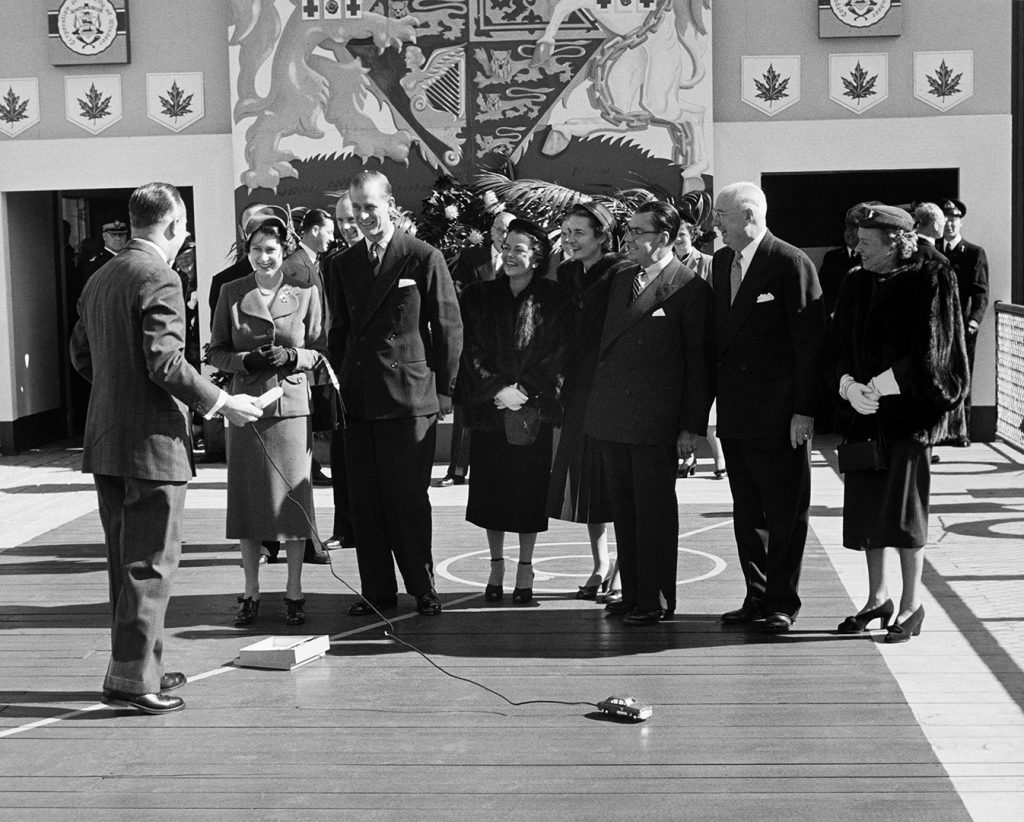
A very complicated shoot
Eight cameramen were employed as well as a team of technicians to follow the Royal couple from Montreal to Victoria and back east all the way to Newfoundland (with a quick side trip to Washington to visit President Truman). Since Eastman Colour could not be used indoors without the use of considerable lighting, some segments of the tour just could not be filmed. The only indoor segment that was filmed was a performance of the Royal Winnipeg Ballet attended by the Royal couple. The NFB received permission to light the hall with several huge lights to make filming possible.
Every single part of the shooting schedule was planned to a T with cameramen travelling to their next stops by train or air ahead of the Royal entourage. The exposed film was shipped by air to Ottawa where it was promptly sent to New York for processing at the Duart labs. At the NFB offices in Ottawa, editors started a rough assembly immediately to speed things up. The choice of Eastman colour film stock proved to be a wise one as 26 out of the 37 tour days were overcast, rainy or snowy! Everyone who saw the film rushes was greatly impressed with the beautiful colours which looked stunning in every situation. Had the NFB shot in Technicolor there would have only been enough usable material for a five minute short.
The rush to get the film finished
Once the tour was over the editors had assembled a 60 minute silent rough cut of the film. They were not sure what they should cut out to bring the film down to 20 minutes as there was so much great material. The president of Famous Players Cinemas, J.J. Fitzgibbons, was invited to have a look at this version and advise the editors. He loved what he saw and told the NFB not to cut anything, that he would show a 50-55 minute version in his theatres across Canada on one condition…that the film be ready for Christmas, just a month later.
The NFB had one month to finish editing the film, record a commentary in both English and French, record music, mix it, cut the negative and process release prints. A very tall order that required at least twice that amount of time. Working day and night, seven days a week, everyone scrambled to finish the film in time for a Christmas release. The entire musical score was performed and recorded in one weekend. The narration was recorded in three days and the first print was approved just a few days before the release.
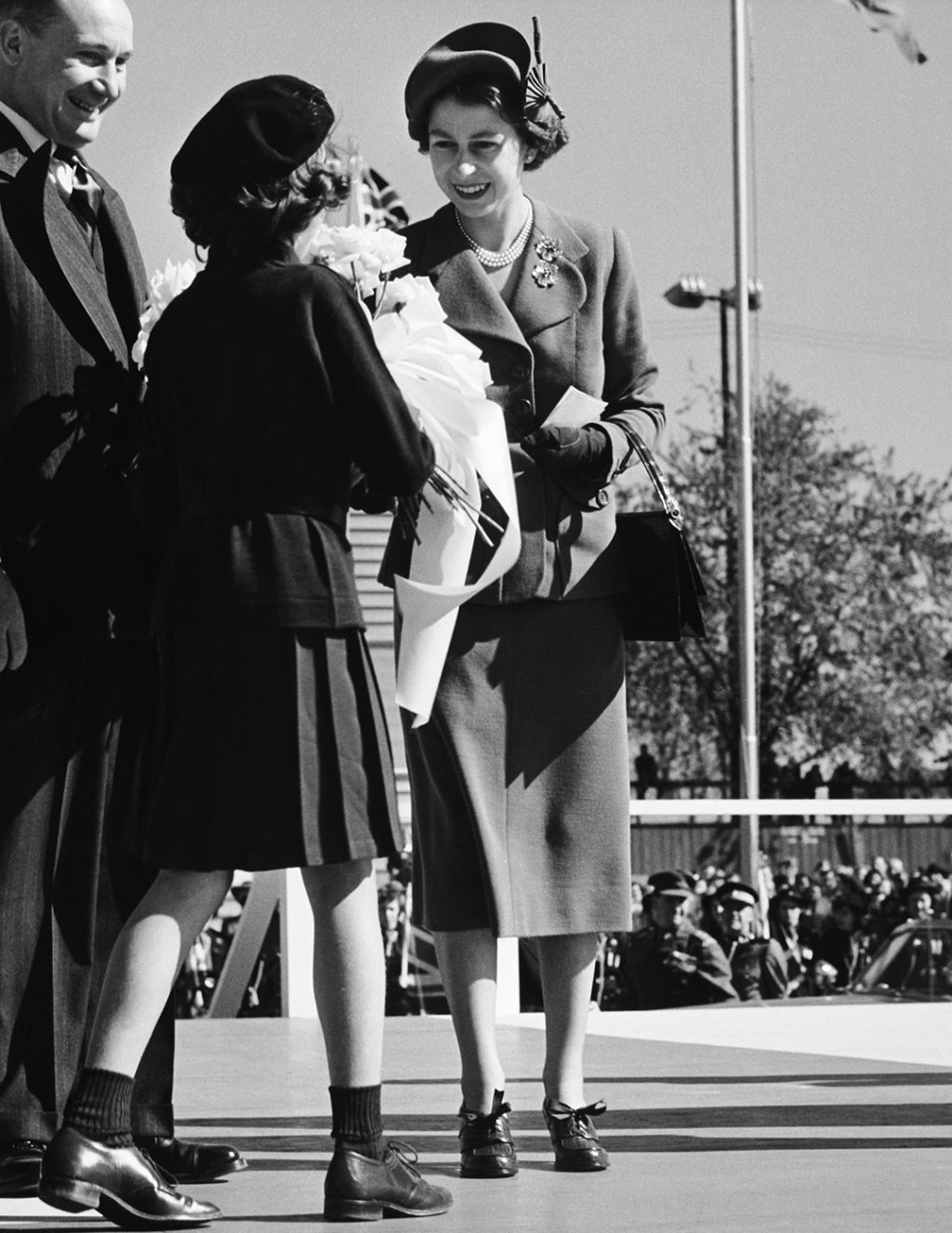
The film is released
On December 21, the film (running 52 minutes) premiered in Ottawa in the presence of the Governor General and other distinguished guests. It opened in 17 cities across the country in English and in Montreal and Quebec City in French (entitled Voyage Royal) over the Christmas period to rave reviews. Some 350,000 Canadians saw it in the first week alone. After just three weeks the film had grossed more than $250,000. It was a smash hit that played in 1,249 cinemas across the country over a two year period and was seen by 2 million people. It became, at the time, the film that had been seem by more Canadians than any feature film ever distributed in Canada.
Most of the reviews of the film were positive. There was however a couple of dissenting voices. The mayor of Toronto lambasted the NFB because he felt that his city was not well represented. This sentiment was echoed by a couple of people in other regions who failed to make the final edit. Many people also objected to some of the “regular people” in the film who comment on the visit, finding these quite corny. In actuality, actors were hired to voice these parts. On viewing this today it is very clear that the dialogue is the weakest part of the film.
The film is a hit around the world
The film premiered in the United States in January 1952 and played across the country including at a New York theatre that showed it for eight weeks. Interestingly, at the request of the distributor, United Artists, the American version was cut down to 48 minutes.
The film also played in the United Kingdom to great acclaim. The Royal couple along with the then King and Queen saw the film and were very pleased. It also played theatrically in France, New Zealand, Australia and Switzerland among others. The film won the Best Canadian Theatrical Feature at the Canadian Film Awards as well as best documentary at the British Academy of Film and Television Awards.
After a year in theatres, the film was made available to the non-theatrical market in late 1952, where it continued to score big playing in schools, community centres and service clubs. It was eventually seen in some 40 countries. It was also re-issued in 1953 during Elizabeth’s coronation.
The film will always have its place in film history as the first feature film ever shot in Eastman colour. Nearly 60 years on, this is what most people notice when viewing the film. The colours are simply spectacular. While some of the sequences are repetitive and the dialogue is weak, it remains an incredible time capsule of a different era. It was the NFB’s first major box office success and it served to show that the National Film Board was still relevant and could tackle big projects successfully.
Royal Journey, David Bairstow, Gudrun Parker & Roger Blais, provided by the National Film Board of Canada
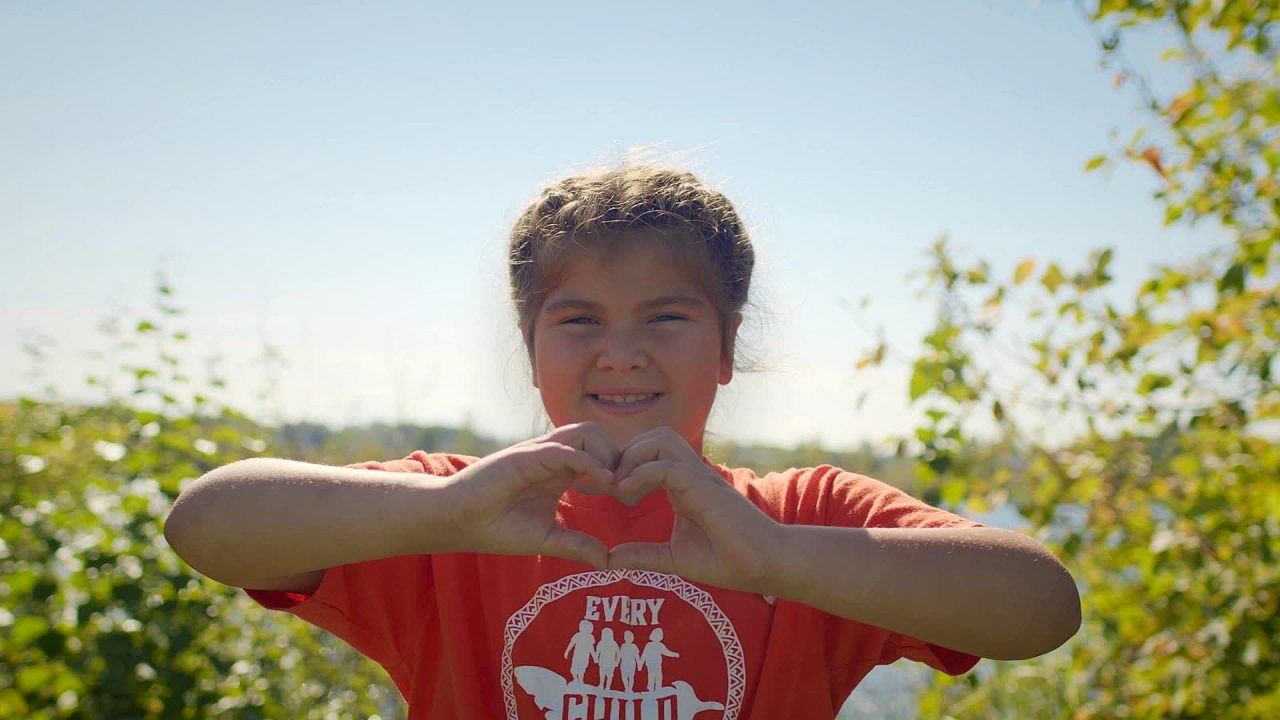
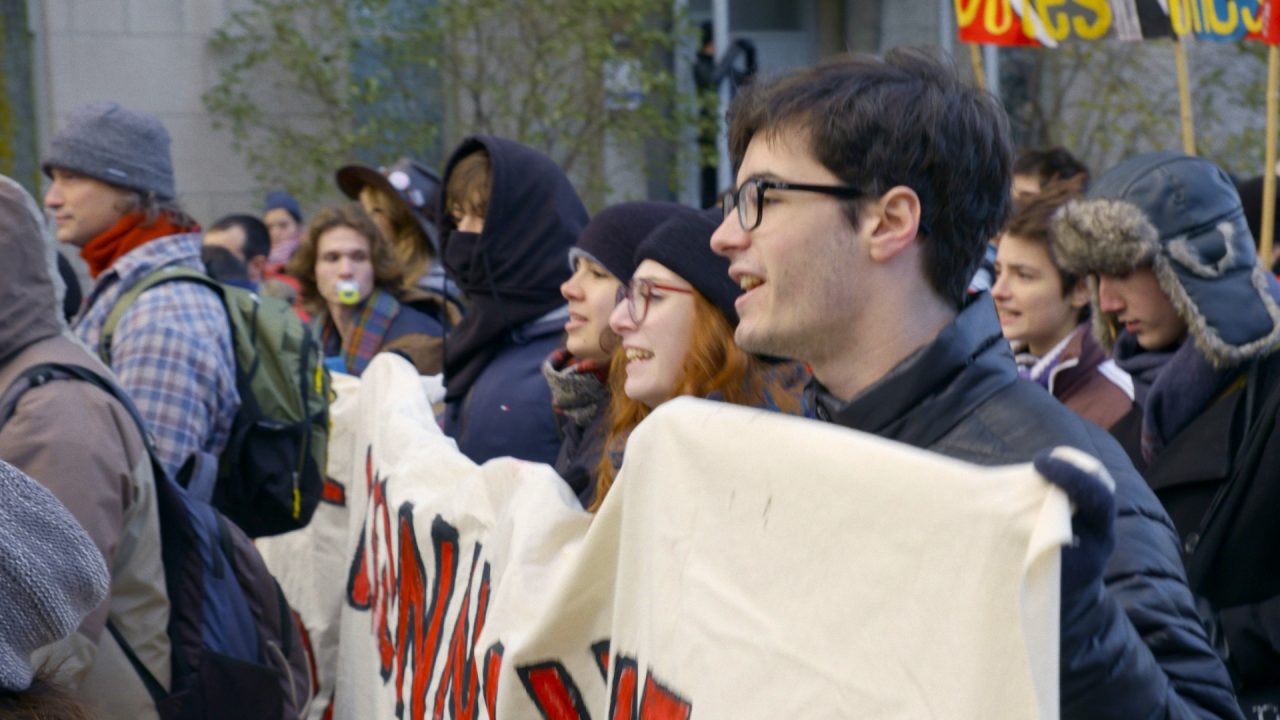
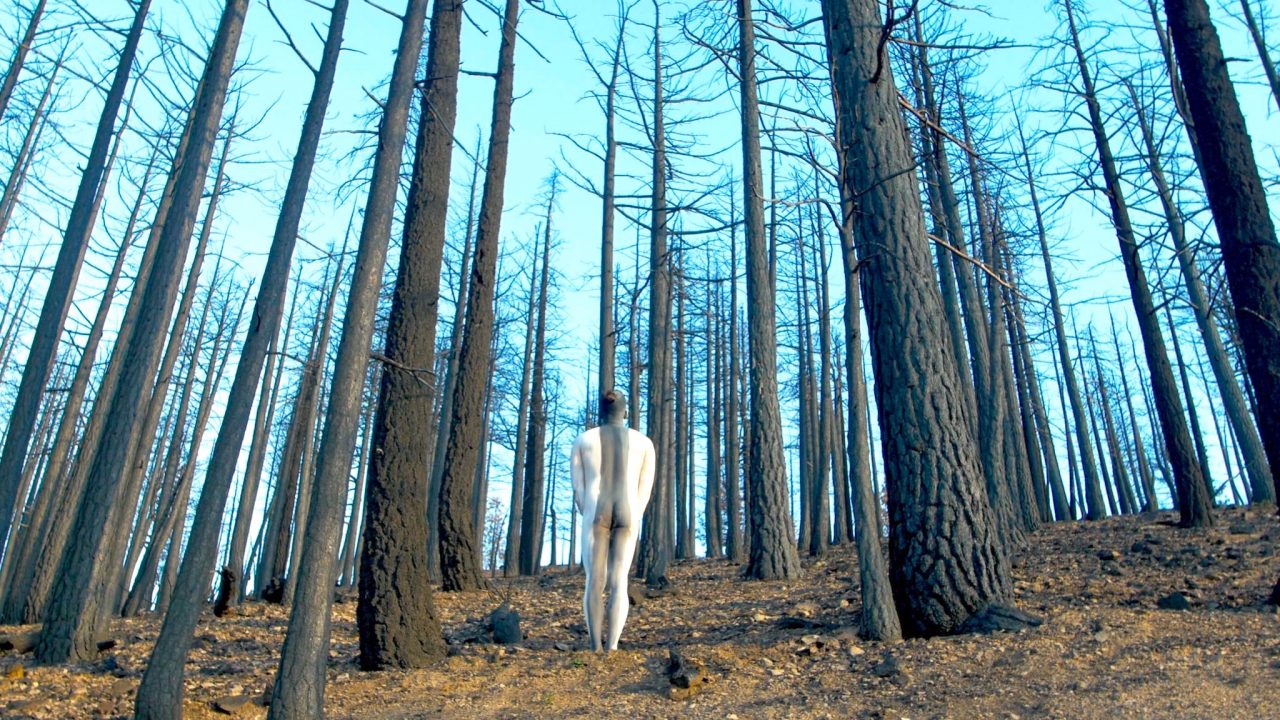
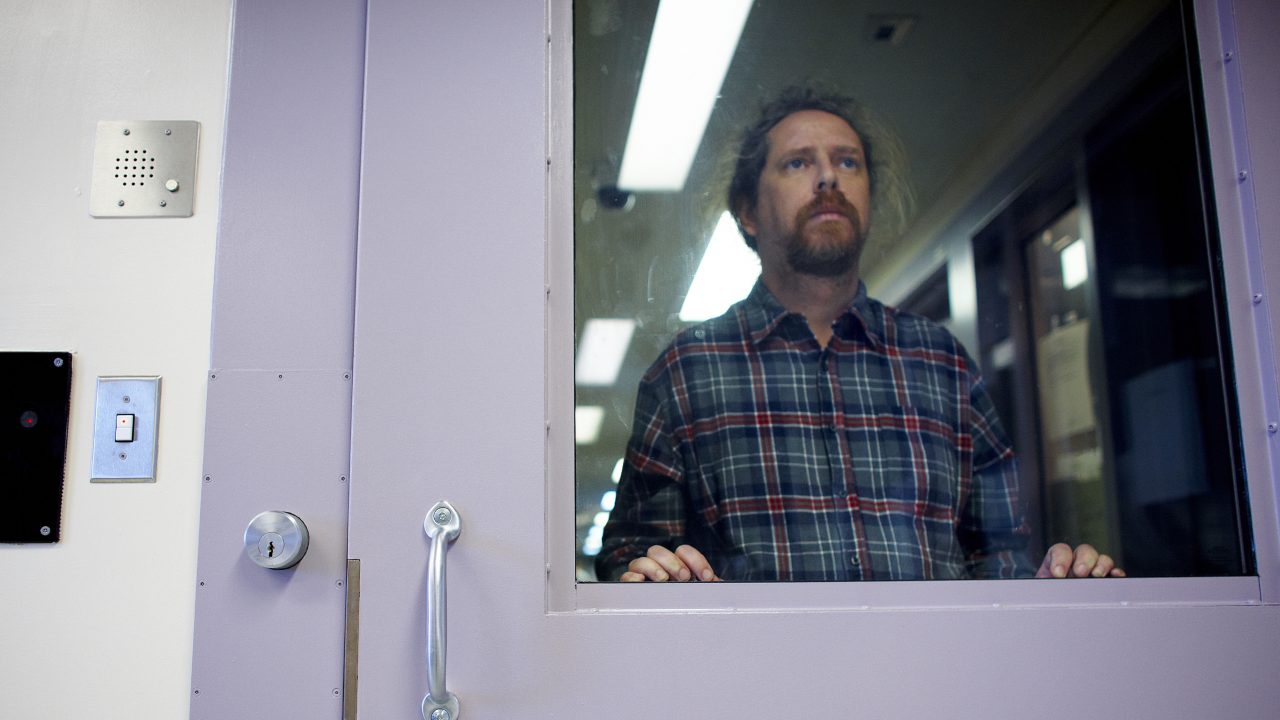
Enjoyed the film very much. We would like to inquire if there is any footage of the dinner held for the Princess and the Duke in Edmonton during this tour or the name of any historical society in Edmonton to contact. Thank you,
Rebecca,
The only footage that was shot indoors was the performance of the Royal Winnipeg Ballet ( the NFB received permission to light the hall where it was performed). The cameramen could not film any other indoor scenes as the Eastmancolour film stock needed powerful lights for any indoor filming and it was too complicated to set up lights for most indoor events. There is therefore no footage of the Edmonton dinner you speak of. Sorry.
This is such a superb piece of film making for its day. The producers must have died a hundred times trying to overcome some of the logistical and artistic hurdles.
Two great moments from the narration. During the visit to Laval University the narrator talks quite openly and matter of factly about how Britain recognizes Quebec as a sovereign nation. Twenty five years later such a suggestion would cause national apoplexy.
And the final words in St John’s “. . . the crowd says goodbye to a sailor and his wife”. Oh dear me, what lese majeste.
It is a terrific film and yet one more superb example of why this country should continue to support and foster the National Film Board.
@Mark – The film is available – there’s just a small bug. Please try again. So sorry.
“Sorry this film is not available”
?? How disappointing.
Extremely interesting article, the film transfer to HD looks great.
Thanks